Migrating from Centerprise 9 to Centerprise 10¶
Astera Centerprise 10 is a major release and not a direct upgrade of Centerprise 9. This means that migrating from Centerprise 9 to Centerprise 10 won’t require you to uninstall Centerprise 9 since Centerprise 10 can be installed side by side with Centerprise 9 on a system. Centerprise 10 is backward compatible, and therefore, most of the flows created on Centerprise 9 can run on Centerprise 10 without modifications. However, the deployment archives (*.car files) created with previous versions are not directly compatible with v10.x. All the deployments must be regenerated and deployed again in the latest version. As with most major releases of any complex software, we recommend that you upgrade your lower-level environment first, so you have an opportunity to test and verify any existing flows. This will make it possible to identify any migration issues you may encounter early in the upgrade cycle.
Note: In this document, we will show how you can migrate from Centerprise 9 to the all-new Centerprise 10. However, you can follow these steps to upgrade from version 8 to version 10 as well.
Installing¶
The installation package for Centerprise 10 (64-bit) contains two setup (.exe) files:
- CenterpriseDataIntegrator.exe – for Centerprise client
- IntegrationServer.exe – for Astera Integration Server
The setup files for Centerprise 10 can be downloaded from the following location:
https://www.astera.com/download-center/
Click here to learn how to install Centerprise 10 client and server.
Licensing¶
Like Centerprise versions 8 and 9, Centerprise 10 also comes with a single licensing key (for server) rather than two separate keys for Centerprise server and client. However, the licensing key for Centerprise 10 has changed which means you cannot use your Centerprise 9 key to register Centerprise 10. The single licensing key for Centerprise 10 is used to register Centerprise server and it controls how many clients can connect to the server as well as the functionality available to the connected clients.
If you’re planning to migrate to Centerprise 10, please contact sales@astera.com to get your new Centerprise 10 license key.
Cluster and Server Management in Server Explorer¶
Centerprise 10 client can be configured with multiple different servers, however, it can only connect with one server at a time. The jobs scheduled, queued, or running on the other registered server will continue to run without interruption even if the client is not currently connected to the server.
All servers pointing to a single repository database will form a cluster of servers sharing the common workload of queued jobs. A cluster of v10 servers you configure will be up and running and processing jobs in a similar way to v9. You can see which server in the cluster has actually processed a job by right-clicking the DEFAULT node in Server Explorer and opening the Job Monitor window.
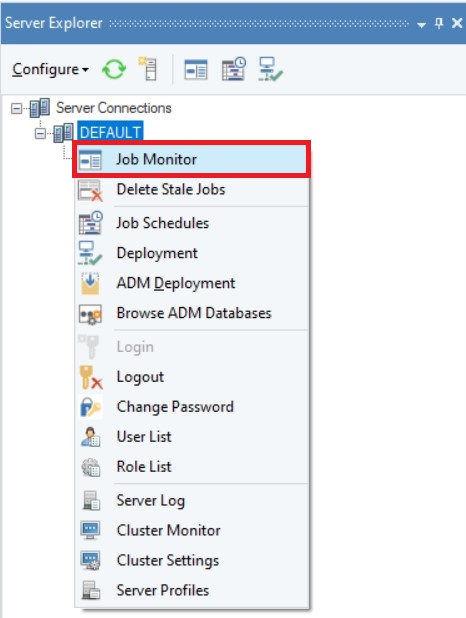
Repository¶
Upgrading Existing Repository¶
Centerprise provides an option to make an in-place repository upgrade which means that if you don’t wish to set up a new repository when you shift to v10, you can just use your existing one from the previous version and upgrade its cluster database. All the jobs scheduled in the repository used in v9 will appear in v10 after the upgrade.
The following steps explain how to upgrade an existing repository for migration from v9 to v10:
1. In Centerprise 10, go to Server > Manage > Upgrade Cluster Database.
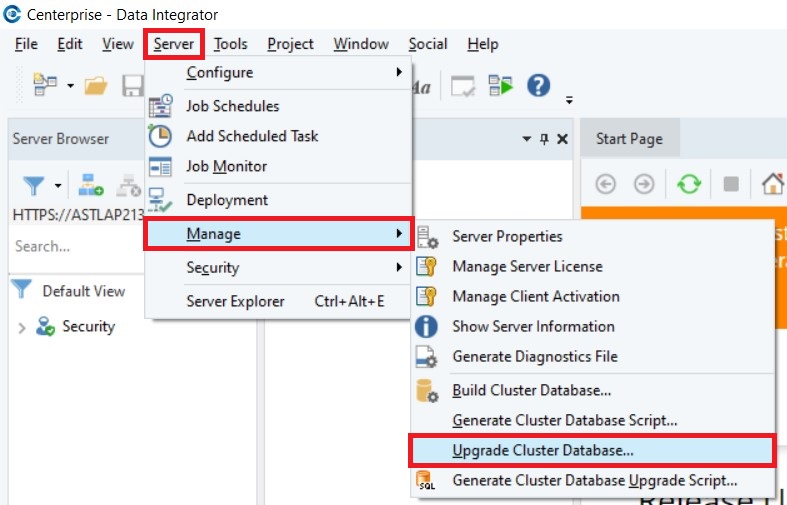
2. Provide credentials of the version 9 repository and click OK:
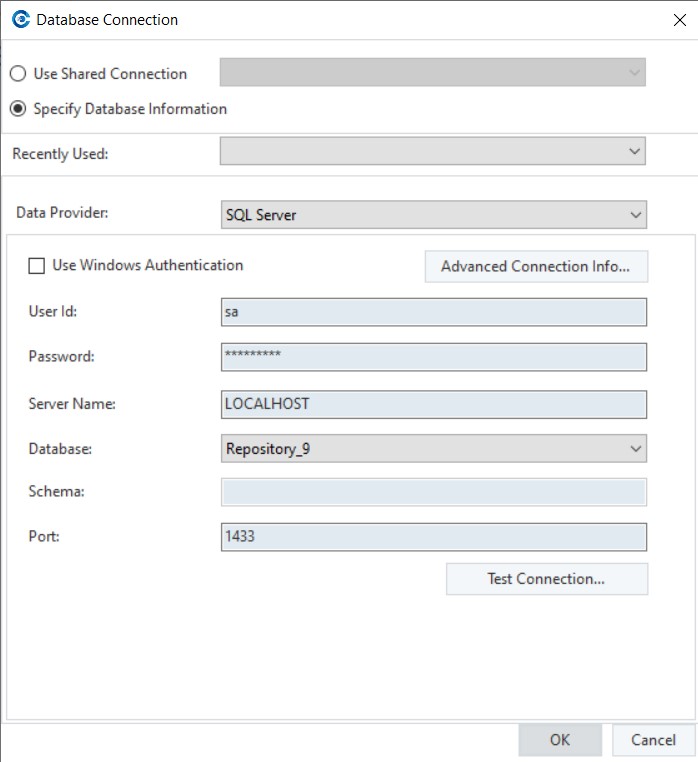
3. Now go to Server menu > Manage > Server Properties.
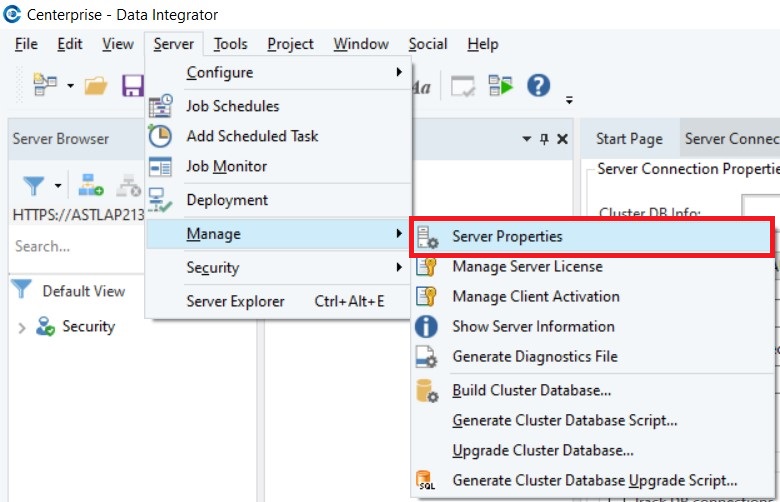
4. In the Server Connection Properties tab, click on the ellipsis button next to Cluster DB Info.
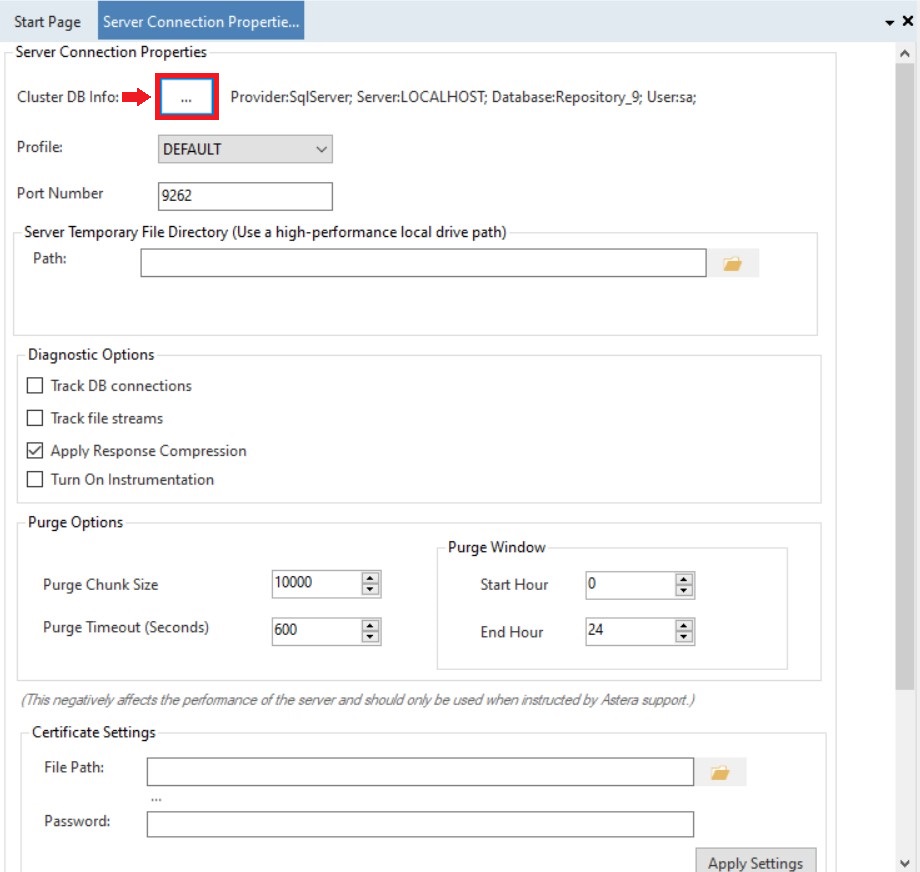
5. In the Database Connection window, provide the credentials of the repository you just upgraded and click OK.
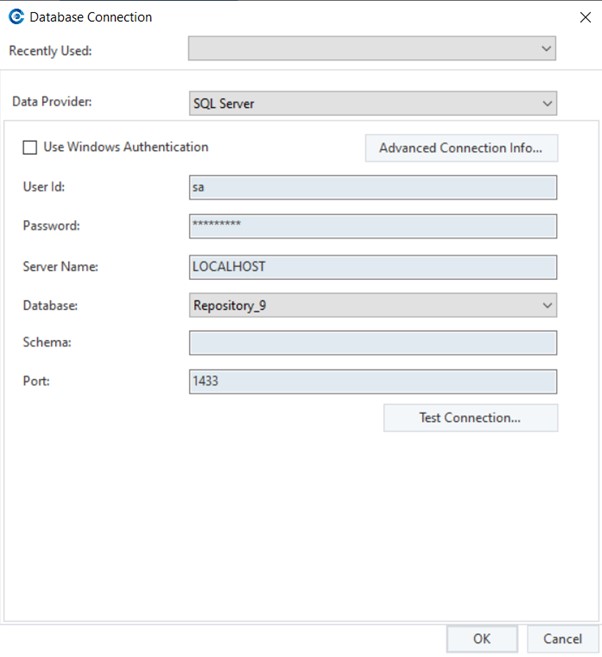
After completing this step, we recommend that you restart the Integration service.
Creating a New Repository¶
If you wish to set up a new repository in Centerprise 10, go to Server menu > Configure > Build Repository Database and Configure Server.

Follow through with the rest of the steps explained in this article to build a cluster database and set up a repository in Centerprise 10.
Manually Migrating Existing Jobs from Centerprise 9 to Centerprise 10¶
In case you chose to build a new cluster repository in Centerprise 10, your next step is to import all the scheduled jobs created in Centerprise 9.
1. For this, open the scheduler in Centerprise 9 from Server > Job Schedules.
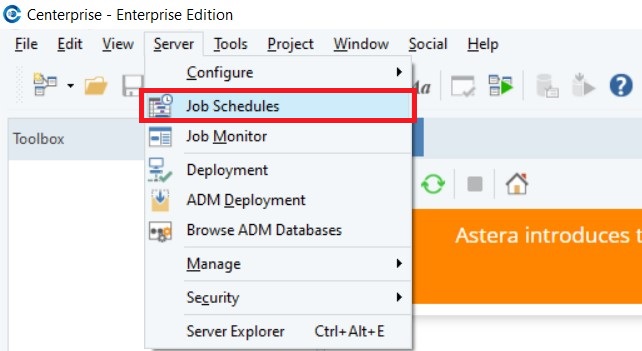
2. You will see all the scheduled jobs listed in the scheduler. Select the jobs you want to migrate. To select all jobs, you can also use the shortcut key Ctrl+A.
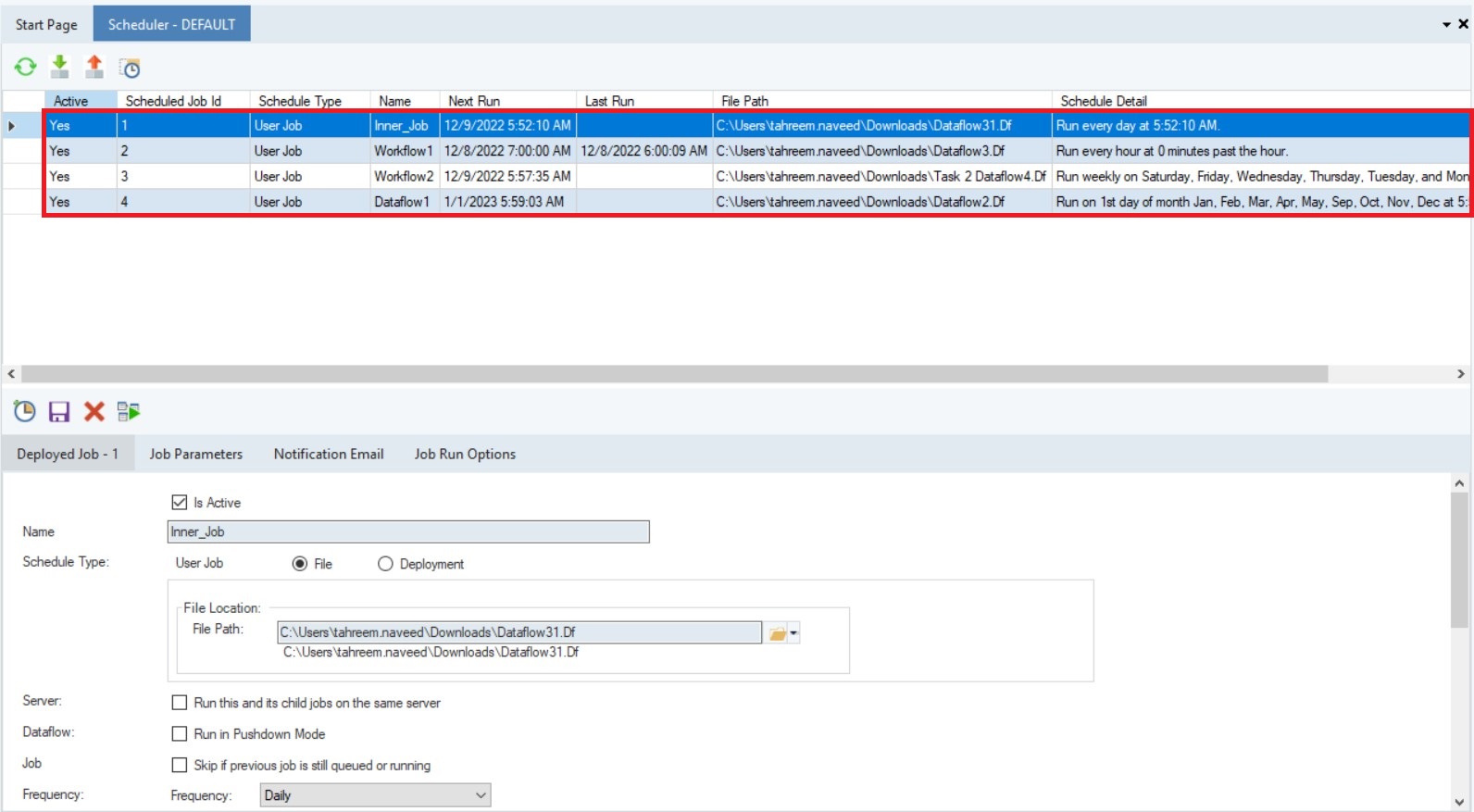
3. Click on the ‘Export Schedule’ icon in the Scheduler toolbar. (This is the third icon from left with red arrow pointing upwards).

4. Point to the directory and folder where you want to save the scheduled jobs and click OK.
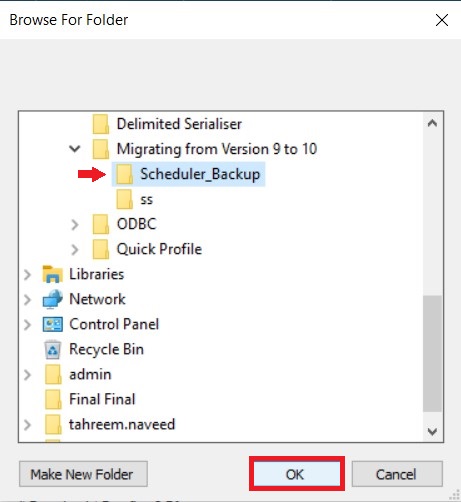
Now Centerprise will create a separate XML file with ‘.Sched’ extension for each scheduled job and save it in the designated folder.

5. A message window will pop up to notify that your scheduled jobs have been exported successfully. Click OK.
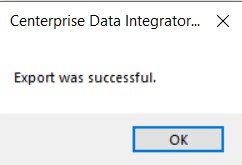
6. Now you need to import the scheduled jobs in Centerprise 10 to complete the migration process.
For this, open Centerprise 10 client and go to Server > Job Schedules.
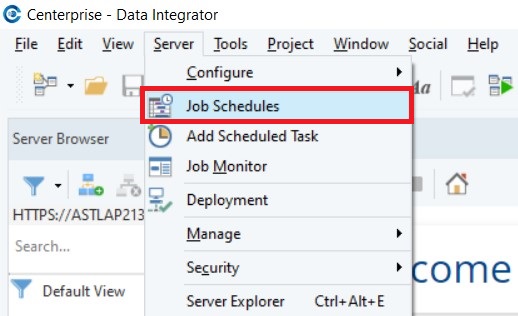
7. This will open the Scheduler tab. To import the existing jobs, click the ‘Import Schedule’ button in the Scheduler toolbar.

8. Point the path to the directory where you have saved the schedule files. Select all the scheduled jobs you want to import and click ‘Open.’
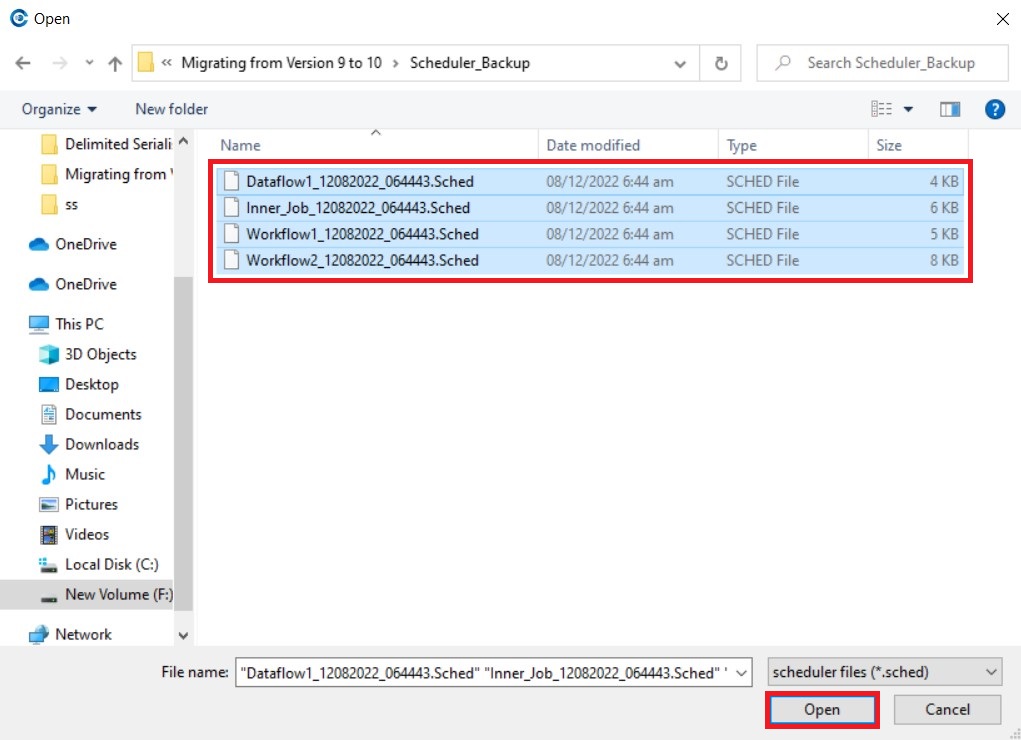
9. You can see that the existing jobs scheduled in Centerprise 9 have been successfully migrated to Centerprise 10 and a new Job ID has been assigned to each job.

Migrating Existing Jobs from Centerprise 9 to Centerprise 10 Using Pre-Designed Flows¶
After building a new cluster repository in Centerprise 10, an alternate way of shifting all the scheduled jobs from Centerprise 9 to Centerprise 10 is to use pre-designed flows.
Prior to any upgrade, we strongly recommend that you take a full backup of your repository database. Also, upgrading a lower-level environment first (such as QA, UAT, etc.) is recommended prior to upgrading the production environment. This will make it possible to sort out/resolve any issues before upgrading production.
Steps to Upgrade:
Using Centerprise 9 client, run the following dataflow to export existing schedules into a comma-delimited file.
Follow this link to download the dataflow: Dataflow Schedule Export
Next, open the downloaded file in Centerprise 9. The dataflow will look like this:
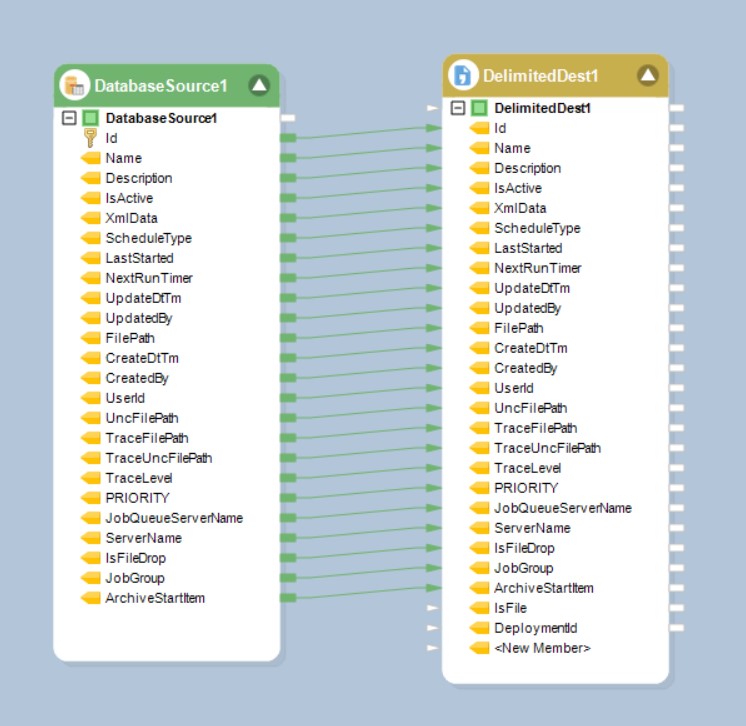
Note: Prior to running the dataflow, you will need to update the Database Table Source object to point to the database where the Centerprise repository resides. Also, in the properties of Delimited File Destination, set up an appropriate file path where you want your file to be saved.
Once the objects have been configured, run the dataflow. This will create a CSV file containing data of all the schedules that existed in v9.
Next, take note of any existing Cluster Settings. You can check it by right-clicking the cluster in the Server Explorer and selecting Cluster Settings in the context menu. These settings will need to be re-configured manually after the upgrade.
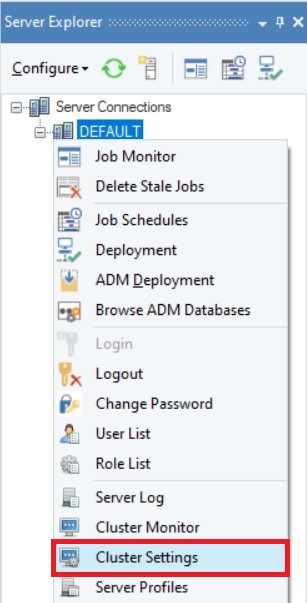
It may be helpful to take screenshots of those settings for later reference. The settings include Staging Directory, Purge Job Frequency Options, Email Notification Setup, etc.

Next, install Centerprise 10 client and server on your machine. You can read more on installing Centerprise 10 client and server in this document.
Open Centerprise 10 client. Go to Server menu > Manage > Build Cluster Database. Point it to the database hosting the Centerprise repository.
Important Note: This will reset the repository.
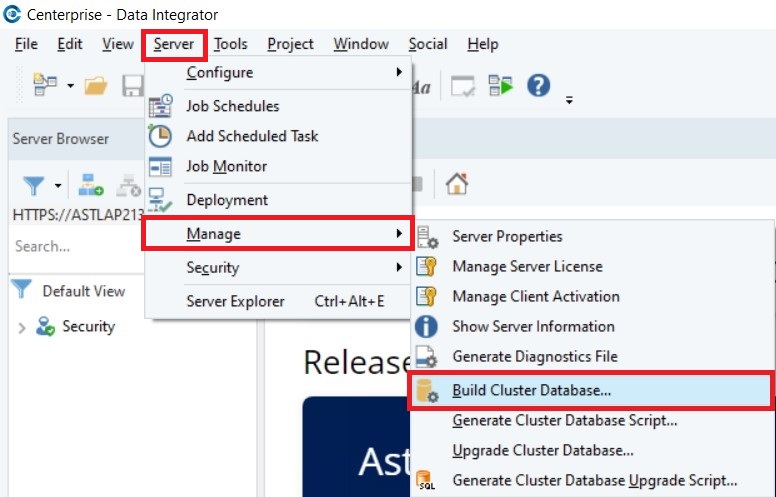
Use the dataflow below to import the schedules you exported previously in Centerprise 9.
Download attached example dataflow: Dataflow Schedule Import
The dataflow will look like this:
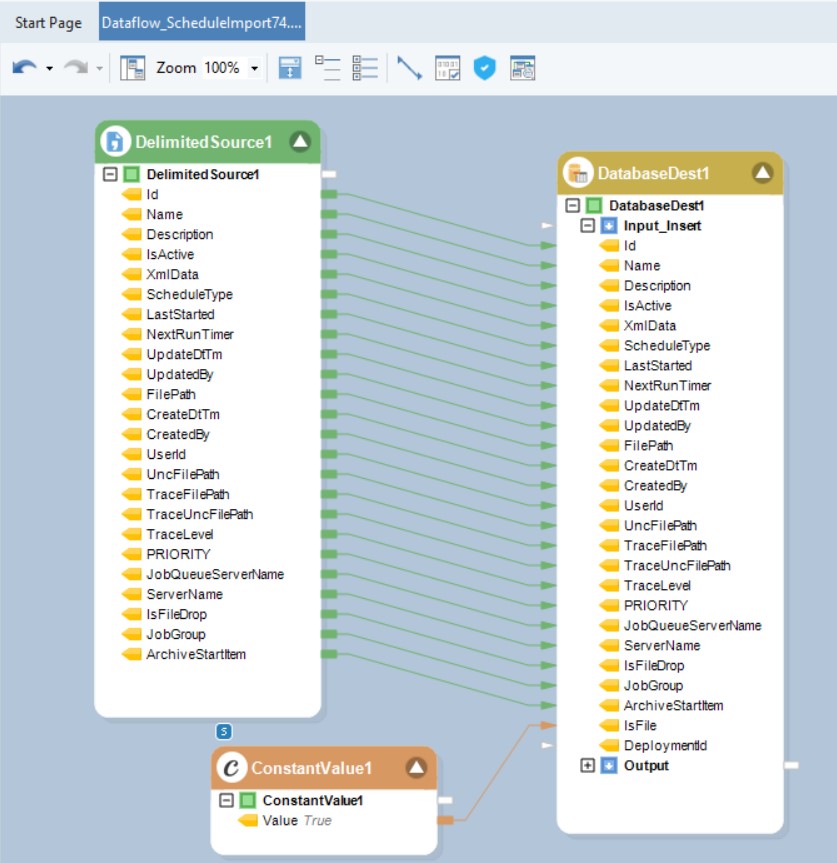
Note: Prior to running the dataflow, in the properties of Delimited File Source, you must import the CSV file you created in v9 that has data of all the schedules. Also, you will need to change the configuration of the Database Table Destination object to point to the database where Centerprise 10 repository resides.
Once the objects are properly configured, save and run the dataflow.
Next, open Server Explorer, right-click on DEFAULT, and select Cluster Settings.
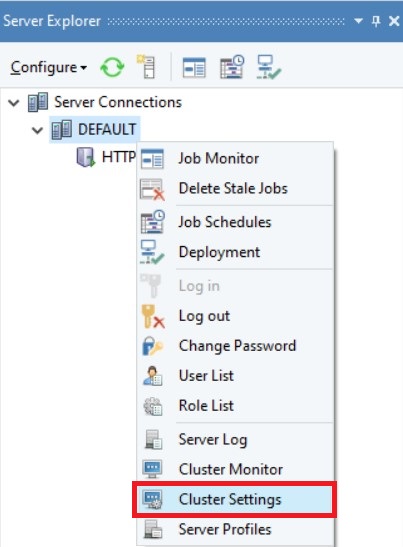
Now, manually re-configure the relevant settings. You can use the screenshots of Cluster Settings you previously took for reference in version 9. Optionally, you can manually reconfigure the Server Profiles setting if a non-default profile was used prior to the upgrade.

Now, restart the Centerprise server.
This completes the upgrade.
You can download the flows by clicking on the links below:
- Dataflow Schedule Export (70 KB)
- Dataflow Schedule Import (60 KB)
Migration Best Practices:¶
- When you are starting the migration process, it is recommended to keep Centerprise 9 and Centerprise 10 servers running in parallel. This is to avoid any interruption in jobs that are currently running.
- We also recommend that you initiate the migration process with a lower-level, testing environment and then promote your deployment to a higher-level environment as needed. This will help ensure smooth migration process with any flow compatibility issues spotted early in the transition cycle.
- A new feature in Centerprise 10 enables you to create an admin email to access the Centerprise server. As a result, you will also be able to use the “Forgot Password” option while logging in. Read this article to learn how to verify the admin email in Centerprise 10.